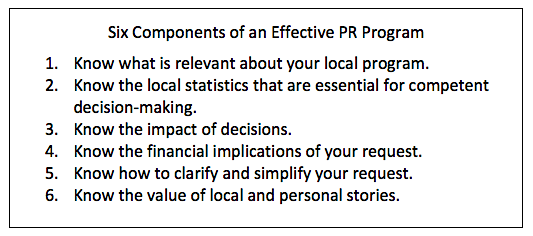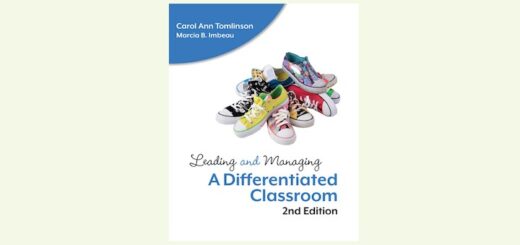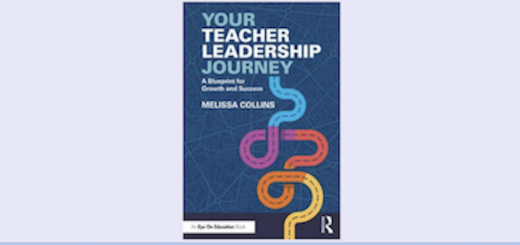Public Relations 101: Messaging that Works
By Robert Blackburn, Barbara Blackburn, and Ronald Williamson
Although principals have a variety of roles, one of those is working with the stakeholders in your school, such as parents, business partners, and the public at large. Public relations is your way of communicating to the public by delivering your messages in a positive manner. The purpose is to shape decision makers’ attitudes regarding your organization or project.
Public relations campaigns focus on primary audiences, such as parents of current students, and secondary audiences, such as parents of future students. Additionally, a strong public relations program must have a plan to be effective.
Effective Programs
Successful public relations programs have much in common. The American Heart Association suggests the following components of an effective program when requesting support.

Every year as we work in a wide variety of elementary and secondary schools, we see dozens of examples where schools either seek external funding for a program or seek support from families and community for launching a new program. In both cases, there is a need to have accurate and timely information about your plans, and clear evidence for how you might use any additional financial resources.
Additionally, successful public relation programs have SMART goals.
For example, you may have a goal of helping the school board see the positive things that are happening in your school. That’s very general and doesn’t provide a specific plan for achieving your goal. Instead, adopt a more focused goal like “improving communication with our board about student involvement in extra curricular programs that complement the academic program.”
You can track such plans with SMART goals. After doing your research you can talk with your superintendent, or other supervisor, about scheduling a report to the board of education on your progress. This allows you to show the board realistic and timely progress on a specific goal.
Audiences
Your public relations campaigns will focus on approaches to different audiences. Doing so means building support for your program and increasing your chances of support. Valuable media markets include daily and weekly newspapers and their online websites, daily and weekly newsletters, commercial and educational television, radio, public affairs programs, and social media.
Other organizations such as county commissioners, churches, service clubs, or PTA’s have newsletter or speaking options to make an impact. Always remember, you are a resource for the media. By customizing your approach to the different groups, you will have the most impact. PR is knowing your audience, knowing your message, and then communicating it in a positive manner.
Developing a Media Plan
The final step in developing your PR campaign is the development of a media plan. This media plan must clearly define your short term and long-term PR goals and objectives because the plan serves as your roadmap.

Sample Public Relations Activities
Schools are engaged in public relations all day, every day, all year long. That ranges from the way students, and their families, are greeted at the beginning of the day, to the variety of communications you use to share information with teachers, families and community “informers.” Even the way you respond when there is a health issue among students, or a disciplinary problem can impact how your school is viewed by the public.
But there are also times when you need a more formal, well-planned public relations initiative. When you do, remember that the very best plans are developed collaboratively, are flexible and responsive to changing conditions, and provide accurate, useful and timely information.
Here are some examples of the more formal public relations activities used by schools.
Sharing information about changes in school organization or program.
- Building support for a bond issue to remodel or make an addition to the school building.
- Providing information on modifications to the extra-curricular program, either the athletic program or other activities.
- Building alliances with community educational or social service agencies to support students and their families.
Leadership Includes PR
Positive communication is more important today in education than ever before. A planned public relations program is a major way to impact leaders, but also the general public. Public relations is a major factor in determining the success of educational programs and gaining public support. It’s part of the leadership job!





































